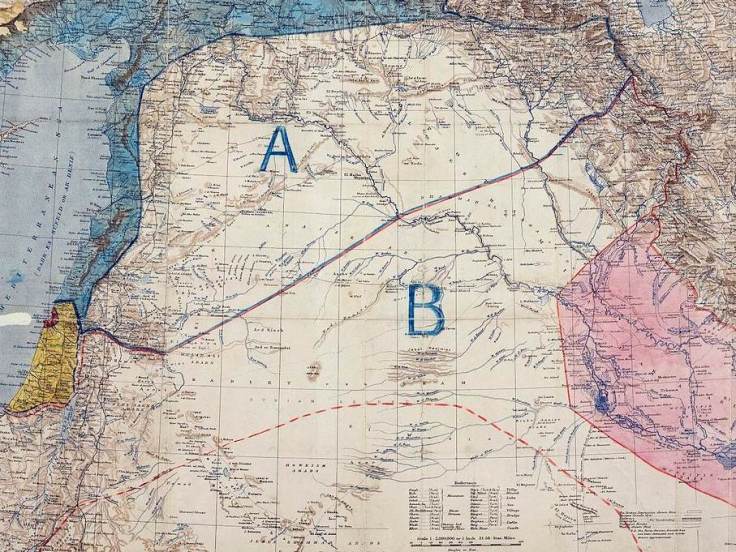I often read about an event in history and think to myself, I could see how those leaders tried to do the best thing, despite their ignorance. Sometimes, they don’t have all the information needed to make rational decisions, so they do the best they can, for better or worse.
Then, there are other times when I read something and think to myself, what the fuck were they thinking? The Sykes-Picot Agreement is one of those times. Actually, I’m still baffled that this actually happened.
In May of 1916, in the midst of the “war to end all wars”, the Allied Powers (France, Britain, Russia) were making hasty plans. Mark Sykes, a British representative, and Francois Georges-Picot, a French representative, engaged in a secret political meeting regarding the status of the Ottoman Empire. In short, they discussed how the two countries would divide up the monarchy if they won. The representatives came to the conclusion that if they were to win the war, they would simply divide the Ottoman Empire in half and split it. So, they grabbed a pen, unrolled a map, and drew a line across the Middle East.

Sykes and Picot literally placed a ruler on a map and drew a diagonal line across the Middle East. France was to control area A and Britain would control area B.
Now, disregarding how insanely simplified this “agreement” was, there were two major problems with this. First, Sykes and Picot did not stop to think that maybe, maaaybe, this would have long-term, devastating effects. Second, Sykes and Picot did not take into consideration that for the past 600 years, the Ottoman Empire was made up of tribes of various religions, ethnicities, and customs. The reason the transcontinental empire thrived for 6 centuries was in part because it allowed these various tribes to self govern while coexisting within the same territory.
Fast-forward 2 years, WWI ended with an Allie victory in 1918. After the Treaty of Versailles in 1919, it was confirmed that Britain controlled what is now Palestine, Jordan, and Iraq, while France controlled Lebanon and Syria. The map looked a little different but the problem remained: the independent nations under the Ottoman Empire were forced under made-up boundaries and another country’s rule. The empire collapsed, leaving the Middle East in economic, political, environmental, and social devastation. Sound familiar? The issues never went away after World War I, they festered and got worse for the next 100 years.
You see, since the Sykes-Picot Agreement was done in secret, it violated pre-negotiated promises made by Britain to the Arabs before the war. Britain promised that if the Ottoman Empire collapsed, Arabic nations would gain independence. That did not happen. In fact, Europe’s colonization of the Middle East did the exact opposite. They flexed their power muscle and had immense influence over the Arabs’ government well into the 4os. The Middle East had enough and went on the defense. They fought to get rid of the colonists and regain control of their land and their autonomy. In trying to reject European power, a wave of Arab nationalism and militaristic regimes surfaced starting in the 50s. This lead to a crisis in the identity of the Arab nations and gave rise to violent oppression in the form of al-Qaeda and ISIS. Yes, ISIS can be traced back to Sykes-Picot. Sometimes history doesn’t always stay in the past.
Back to my original point, I was (and still am) utterly bewildered that these leaders did not have the foresight to think of the long-term consequences that might follow. Or maybe they did but were too arrogant to think anything bad would actually happen. Thoughts?
Sources:
http://www.bbc.com/news/world-middle-east-25299553
http://www.newyorker.com/news/news-desk/how-the-curse-of-sykes-picot-still-haunts-the-middle-east
http://avalon.law.yale.edu/20th_century/sykes.asp
Leave a comment